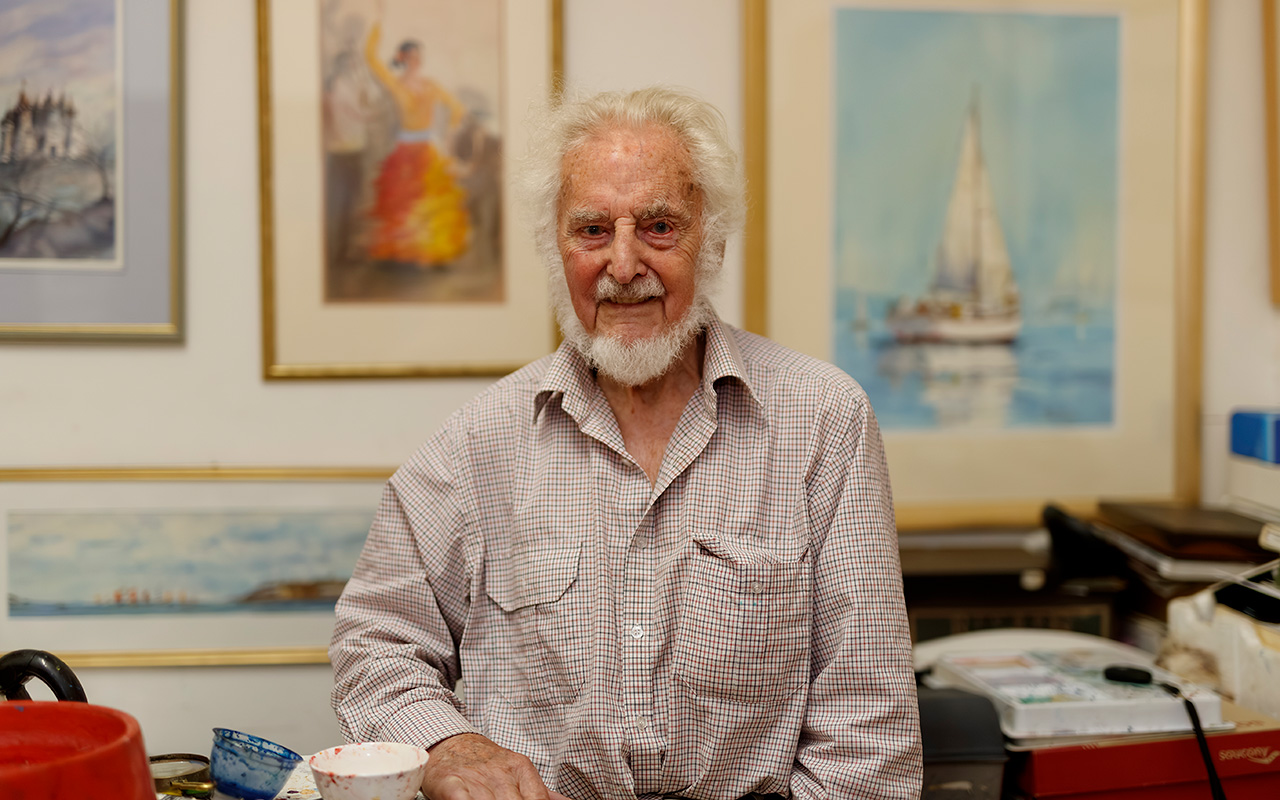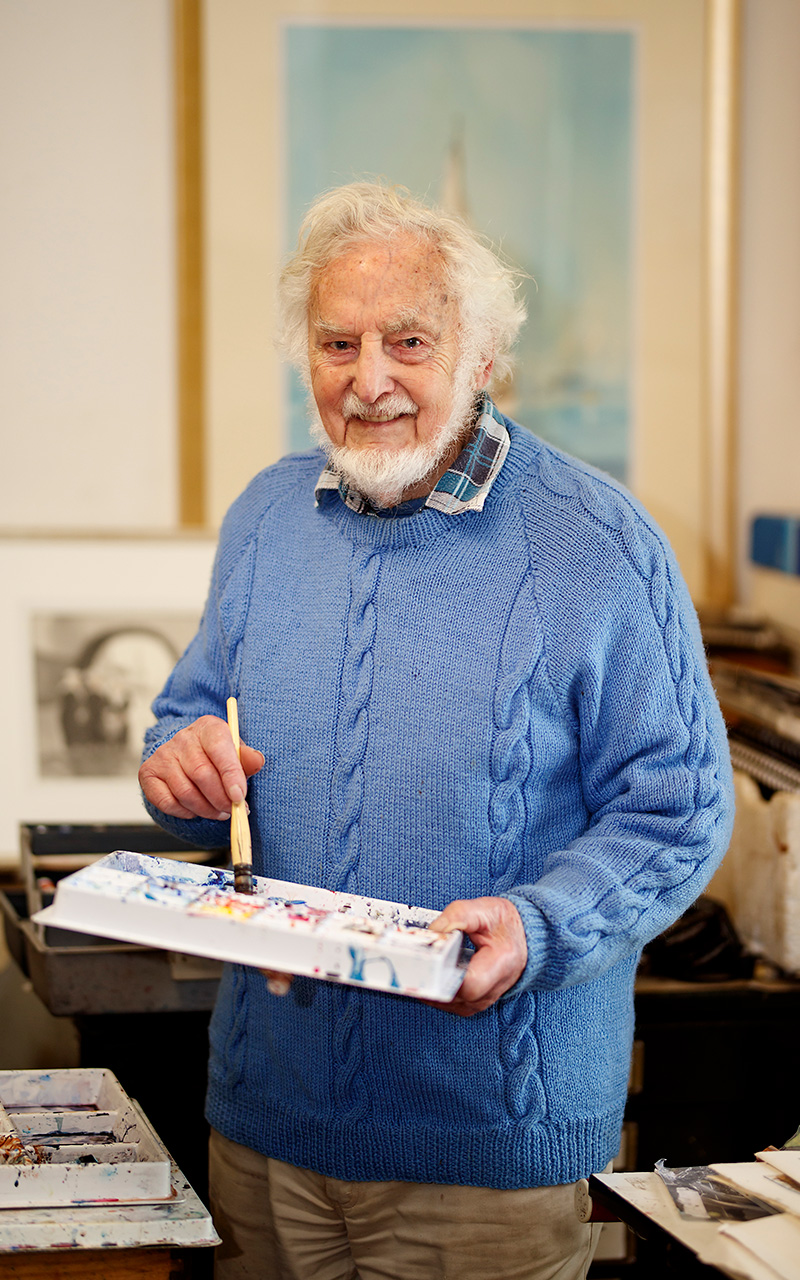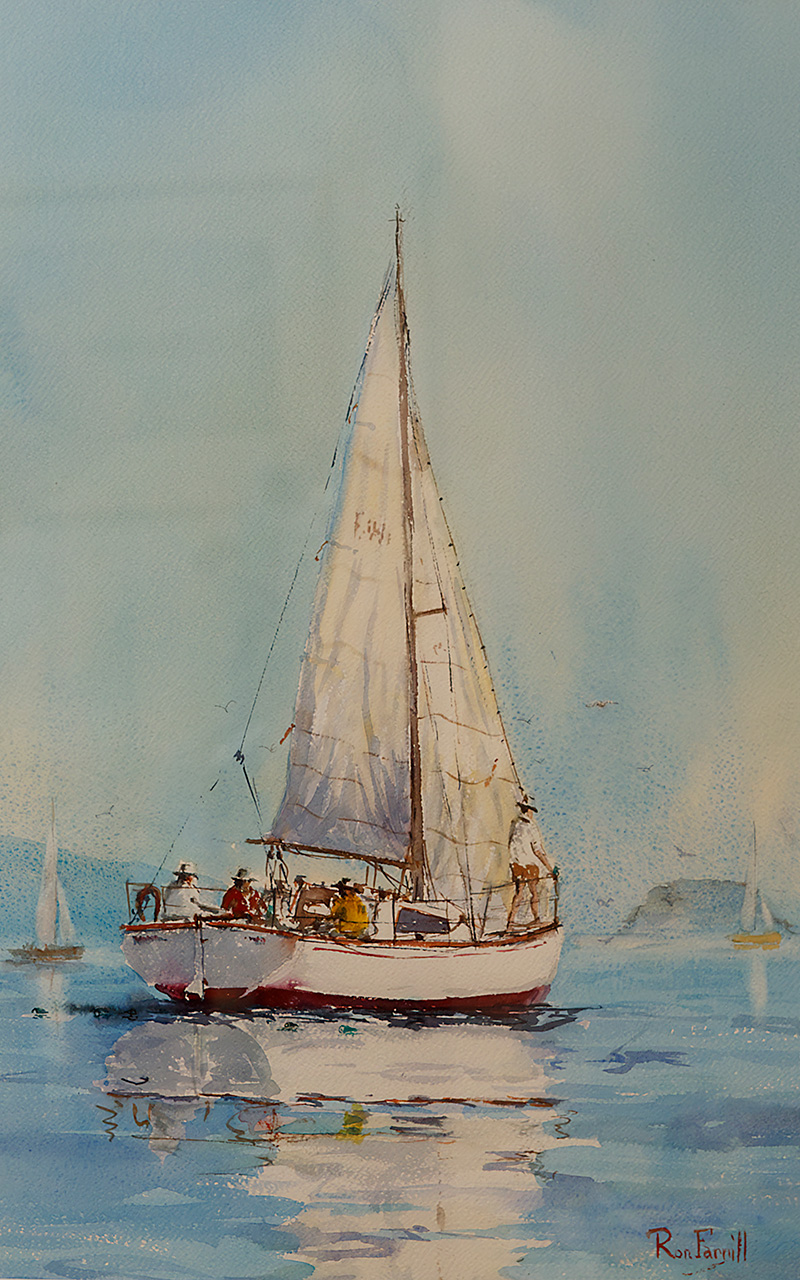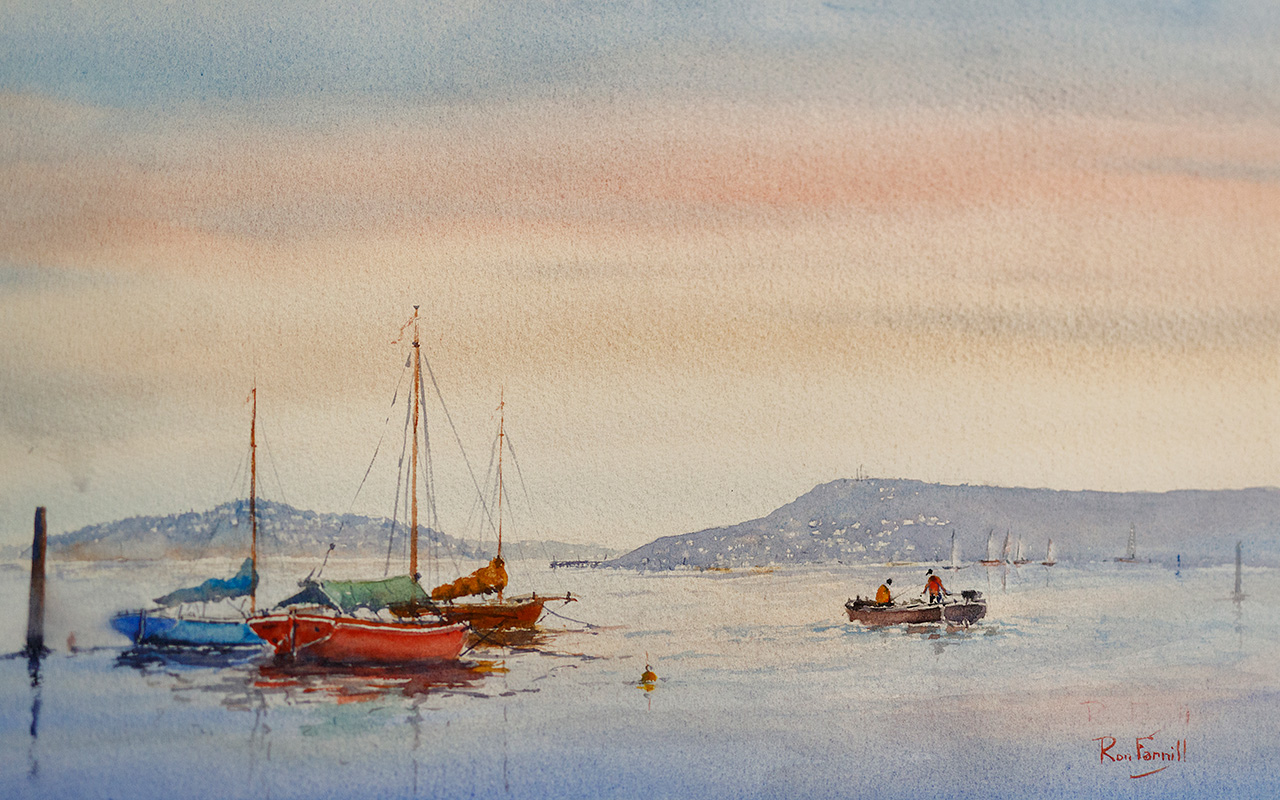
Renowned 97-year-old watercolour artist Ron Farnill’s optimism is something to admire. He’s going to ask the Mornington Peninsula Shire for a grant to hold his 100th birthday exhibition in 2027.
Known for his paintings of ships, Ron came from a seafaring family which sailed Cape Horn, but his grandfather broke from tradition and started a factory in the landlocked city of Leeds. Ron is sure he inherited the salt in his genes because when they went on holiday to the seaside, he could never understand why they didn’t live there. “We used to go camping,” Ron says, “and I must have been a terrible worry to my family. There was a sand hill and a creek that used to go down to the sea. I was only four or five, and I used to nick off and make dams. The people on the beach used to see me and take me back to the camp, but in no time at all, I’d sneak off again.”
Ron didn’t intend to be a sailor. He was an electrical apprentice but was conscripted into the Navy during WW11 and became an aircraft electrician on a small aircraft carrier. “I was all full of enthusiasm. You’re just brainwashed. It was crazy. All these people killing other people that they don’t know.”
Post-war, Ron and his brother faced conscription to go to Malaysia, but by then, the family were all pacifists, so they sent the papers back saying they no longer lived there. “We buggered off to London and got a cancellation on one of the P&O ships going to Australia, so we went to Sydney. Another serendipitous thing was that Betty (who later became Ron’s wife) got a message to say she was needed back in Melbourne because her father had had a bad fall, and she was also on the boat by chance.”
By this time, Ron was a cyclist and knew a professional bike rider at the same table as Betty. They met and became friends. Ron couldn’t get an electrician’s license in Sydney, and Betty suggested he take time out to go on a camping holiday with family in Melbourne.
“I found out that Australian camping holidays were entirely different from the UK,’ Ron says. We were camping in a farmer’s field. The water and ablutions were the creek down at the bottom. We caught fish in the creek. I got the job of shooting rabbits for the stew, and we used to lift up the potatoes in the farmer’s field and pick out a few potatoes, put the plant back, and then move on to the next one. The farmer didn’t seem to mind.” “After the holiday I went to the State Electricity Commission in Melbourne, got my licence and got myself a job.”
Ron began to paint when he was very little and wasn’t enthusiastic until he got a new art teacher. Ron says, “She said, ‘What do you think it would be like to live down at the bottom of the sea.’ I was really into it from then on. Teachers and students would vote for which painting was best, with the lowest-scoring ones being removed and, before long, I moved up the scale. In 1938, there was an all-school art exhibition where all the schools in the UK could put in two paintings. They selected one of my paintings, and I got an award.”
…I decided it was about time I painted for myself rather than for other people.
Ron didn’t paint again until years later when he and Betty were married and living on the Peninsula. They both started a diploma course, but Ron said, “They insisted that we copy, and that just wasn’t me. I decided it was about time I painted for myself rather than for other people.”
Unfortunately, Betty had an aneurysm and developed brain tumours, and Ron became her carer. This was when he discovered watercolours. “Betty was having a seizure, and with oil painting, you can’t just drop everything, but you can with watercolours.”



Ron entered an art show in Hastings and won a prize. With the prize money, he bought a book by Robert Wade on watercolour. “I did everything he was saying in the book, but it wasn’t working,” Ron says, laughing. “Then, by chance, the Peninsula Artists Society advertised a four-day workshop by Robert Wade. I signed up for it mainly to go crook at him, but when I actually saw how he did it, I realised it wasn’t him not giving me the information; it was me misinterpreting it. I was still trying to paint like an oil painter. Watercolour does things that you couldn’t do with oil if you tried. The paint runs here, the paint runs there, it’s got a life of its own, and then people ask, ‘How’d do you that,’ and when you tell them you don’t know, they don’t believe you. They think you’re just keeping it a secret. I have one warm eye for warm colours and one cool eye for cool colours.”
“I still can’t really copy. I go outside to paint. Outside painting has got something about it. The paintings have a feeling about them. With watercolour, you’ve got to work quickly. There’s this beaut spot down the road in Flinders where you get a great view of West Head, and one day I went there and did some sketches. When I went back to do the painting, a big pine tree had fallen and blocked the view and the only way I could see the view was to stand in this bunch of blackberries. While I was painting, a bus full of tourists pulled up, and a whole lot of Japanese visitors got out and took pictures of this silly old bugger standing, painting in a heap of blackberries.”
Ron lives alone in his Red Hill South home and still drives to the shops once a week for supplies. He’s philosophical about his age and doesn’t believe he’ll go anywhere when he dies. “In about 1940 there weren’t any air raid shelters in Leeds, only cellars. The anti-aircraft guns were firing, there was shrapnel flying, and we were running down the street to the shelter, and I said to the bloke up there, ‘STOP IT, my Mum’s not happy, and if you don’t stop it, I won’t believe in you’. I expected to get zapped, but I didn’t, and that’s when I stopped being religious.”
Ron’s paintings can be viewed and purchased online.
gallery247.com.au
